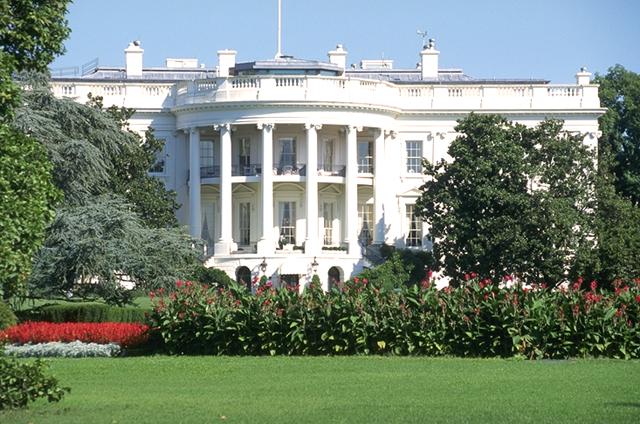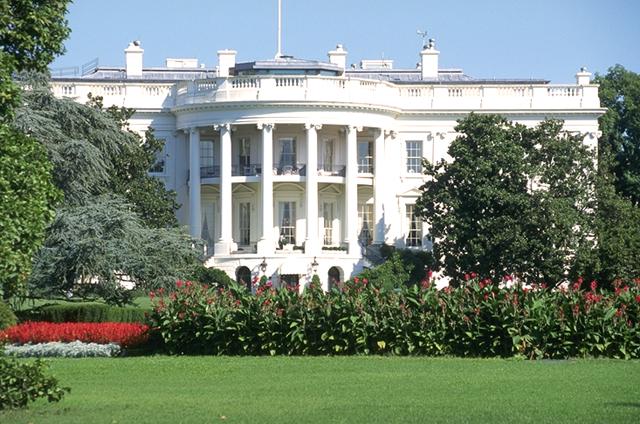Ag Policy Blog
White House Budget Details: Few Changes to USDA Farm Programs, But Proposals to Raise Corporate Tax Rates
OMAHA (DTN) -- Despite a lack of willingness in Congress last year to go along with his tax proposals, President Joe Biden's budget proposal for fiscal year 2023 again calls for raising the corporate tax rate to 28% and imposing special taxes on high-income taxpayers.
Overall, the White House proposes a $5.8 trillion budget for fiscal year 2023 with USDA's total budget outlays at $261 billion, about the same overall cost as 2022. The White House proposes a $4.2 billion increase in the discretionary budget for USDA that is offset by lower mandatory spending forecasts.
The budget maintains several tax changes that failed to move in the U.S. Senate last year, including a proposal to raise the corporate tax rate from 21% to 28%. The White House also proposes a minimum 20% tax on households with more than $100 million a year in income.
Biden's budget proposal could become more complicated if it does not pass before the midterm elections with forecasts that the Republicans are expected to take control of the House of Representatives. That would likely shelve most of Biden's plans involving areas such as taxes, renewable energy, and climate change.
The White House forecasts the deficit will be $1.3 trillion lower than 2022, due in part to the end of major spending initiatives passed by Congress to help aid people through the pandemic. Much of that funding has run its course.
Given the level of security challenges with the war in Ukraine, the budget would boost defense spending by $69.3 billion and add another $6.9 billion to a North Atlantic Treaty Organization (NATO) initiative.
To address some of the supply chain problems that have plagued the country, the president proposes spending $230 million for ports and boosts the Harbor Maintenance Trust Fund by $1.7 billion.
While there are global worries about food security, the overall White House budget highlights $10 billion to respond to global conflict and natural disasters, but the budget does not reflect a significant boost in international food aid. USDA's P.L. 480, "Food for Peace" program is budgeted at $1.74 billion for 2023 -- the same as 2022 -- which is about $800 million lower than 2021.
P[L1] D[0x0] M[300x250] OOP[F] ADUNIT[] T[]
The State Department, which plays a significant role in food aid, is proposing $1 billion for "a bilateral agriculture and food security program" to help deal with global food security.
Throughout the Barack Obama and Donald Trump presidencies, the budget proposal typically recommended reforms to both commodity programs and cuts to crop insurance. For the second year in a row, the Biden administration held pat in not offering similar proposals. That led the group Taxpayers for Common Sense to criticize the budget plan for not making any requests to change farm subsidies -- even though Congress has declined to take up such proposals in the past. The group stated "there's waste, fraud and abuse in farm programs" that is not being addressed by Biden's budget plan even as Congress starts to ramp up for the 2023 farm bill.
With higher commodity prices projected, USDA's budget lowers expected commodity payments for FY23, falling from $2.33 billion for Agricultural Risk Coverage/Price Loss Coverage payments in 2022 down to $641 million for 2023. Dairy Margin Coverage payments also are projected to decline from $1.58 billion to $990 million. Overall, USDA projects that spending through the Commodity Credit Corp (CCC) will fall from $8.23 billion to $5.7 billion.
Agriculture Secretary Tom Vilsack said the budget will reduce the deficit, help expand the economy and reduce costs for families.
"The president's budget provides USDA with the tools needed to support a vibrant, revitalized and prosperous rural America," Vilsack said. "It contains transformational investments that will help rural communities build resilience to the climate crisis, increase landscape resiliency to the impacts of climate change, create more and better markets for our hardworking producers, bolster access to healthy and affordable nutrition for families, help connect all Americans to high-speed, affordable and reliable internet, strengthen USDA's efforts to build equitable systems and programming, and position the United States to be a leader in agricultural research."
USDA projects people enrolled in the Supplemental Nutrition Assistance Program (SNAP) will increase in FY2023 by about 1.2 million people monthly to an average of 43.5 million people enrolled in the program. USDA cited the post-recession uptick is consistent with SNAP enrollment often lagging behind economic conditions. Still, costs under the program are expected to decline because the emergency payments made over the past two year will end in July.
Climate proposals are blended into the White House budget in several department requests, including $1.8 billion at USDA. The U.S. Forest Service could receive up to $1 billion in additional funding, including provisions to ensure no forest firefighter is paid less than $15 an hour.
The budget also calls for increasing the Conservation Reserve Program acreage to as much as 27 million acres, in line with the 2018 farm bill acreage cap for the program. Last week, the National Grain and Feed Association (NGFA) led a letter with other agricultural groups calling on Vilsack to "provide flexibility" for CRP "to help address global commodity supply challenges caused by Russia's invasion of Ukraine." Currently, about 22 million acres are enrolled in CRP.
Overall, USDA's budget reflects about $480 million less in conservation spending through the Natural Resources Conservation Service (NRCS) because of $918 million in supplemental funding for some key watershed programs through the infrastructure bill in 2022 that won't show up on the 2023 budget.
Regarding climate-smart agriculture, USDA stated NRCS will expand its monitoring, measuring and reporting efforts. NRCS also will integrate carbon soil monitoring work into some of its programs. USDA looks to boost technical assistance programs by $154 million in discretionary funding and some of the mandatory spending on technical assistance for several USDA programs will be trimmed back in the budget by as much as $389 million.
USDA also is budgeting $10 million for the Packers & Stockyards Act enforcement as the department expects to finish three new packer enforcement rules sometime in FY 2023.
The Food Safety and Inspection Service (FSIS) also is proposed to receive $44 billion to continue helping small processing facilities pay for federal inspections.
USDA also wants $600 million for its rural broadband program, ReConnect, asking for a $22 million increase for that program.
Looking to address equity issues, USDA proposes to double the lending capacity for the heirs property program to $51 million to support resolving heirs ownership issues that affect a lot of minority farmers, particularly in the Southeast.
White House budget plan: https://www.whitehouse.gov/…
USDA proposed Fiscal Year 2023 budget: https://www.usda.gov/…
Chris Clayton can be reached at Chris.Clayton@dtn.com
Follow him on Twitter @ChrisClaytonDTN
(c) Copyright 2022 DTN, LLC. All rights reserved.





Comments
To comment, please Log In or Join our Community .